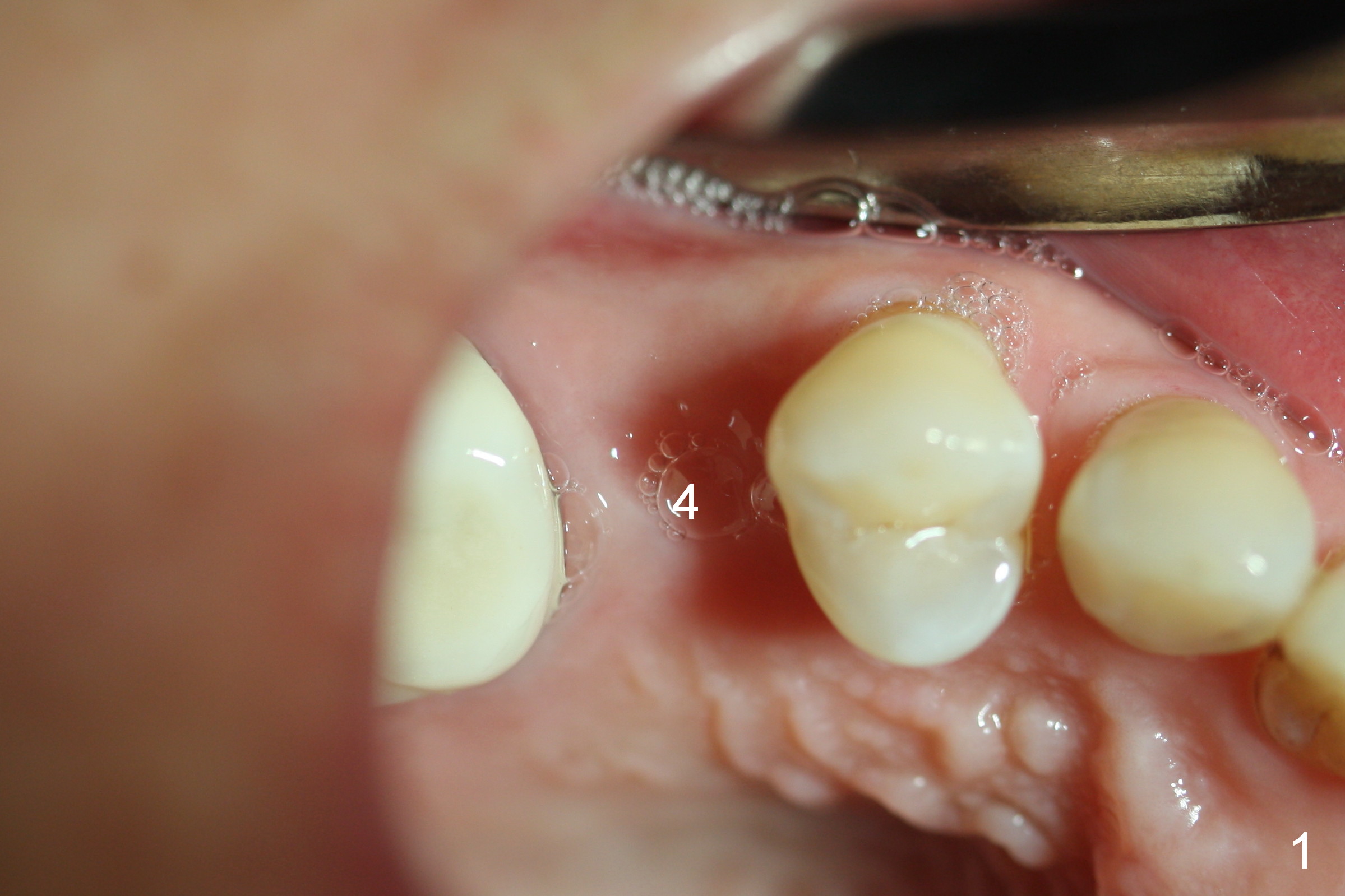
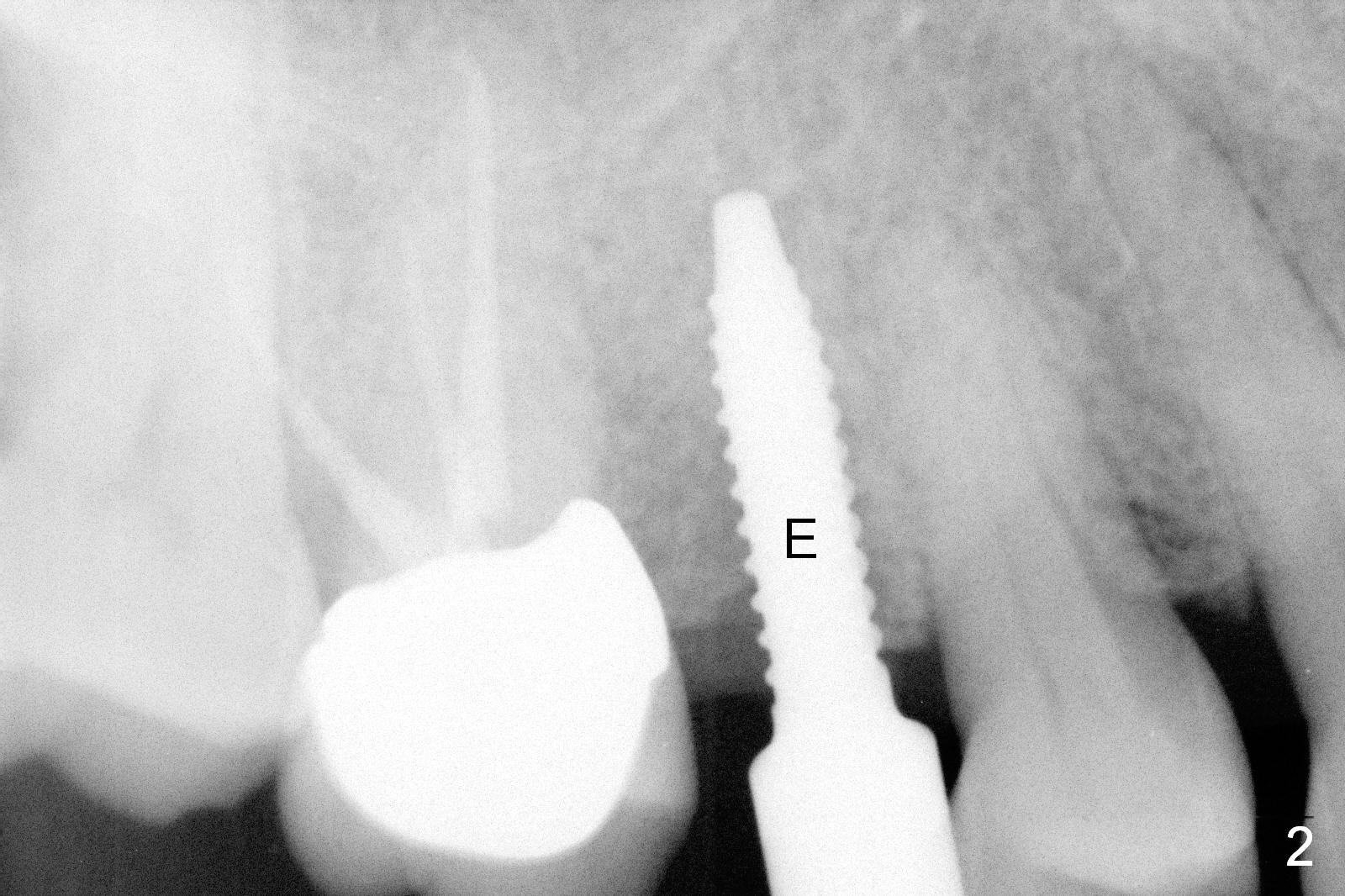
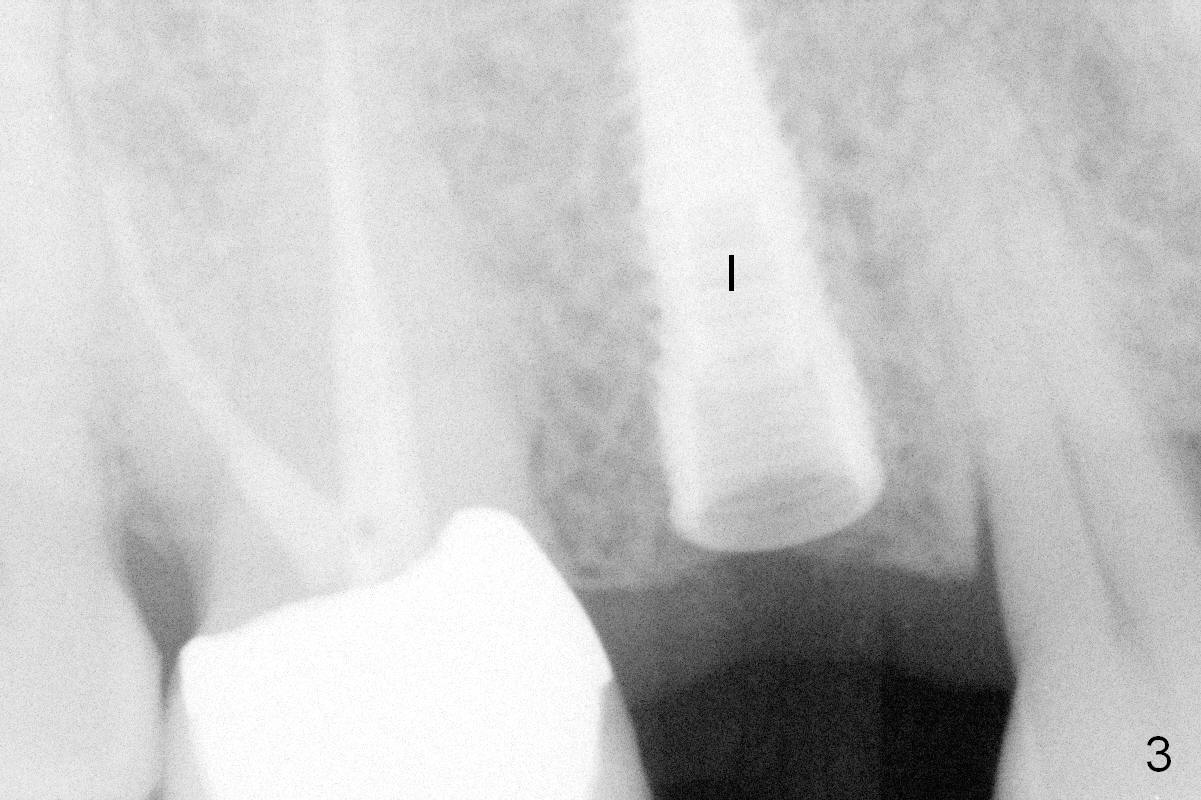
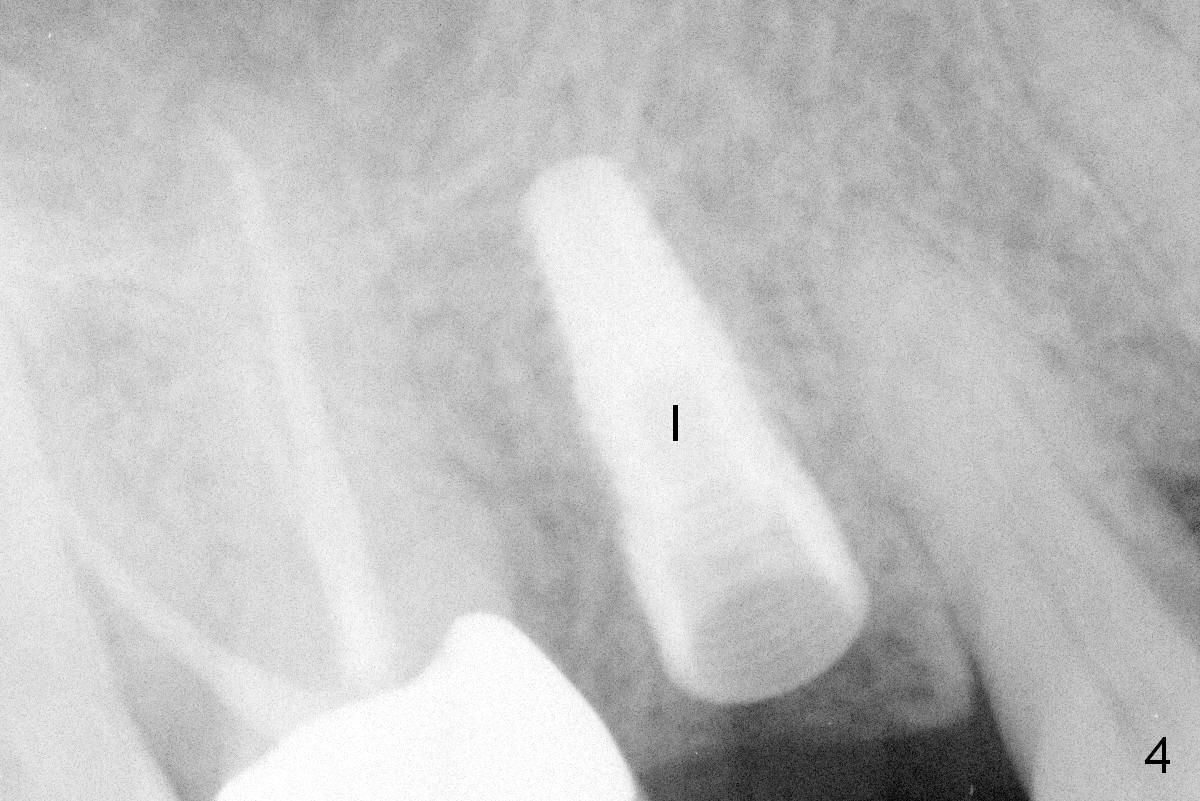

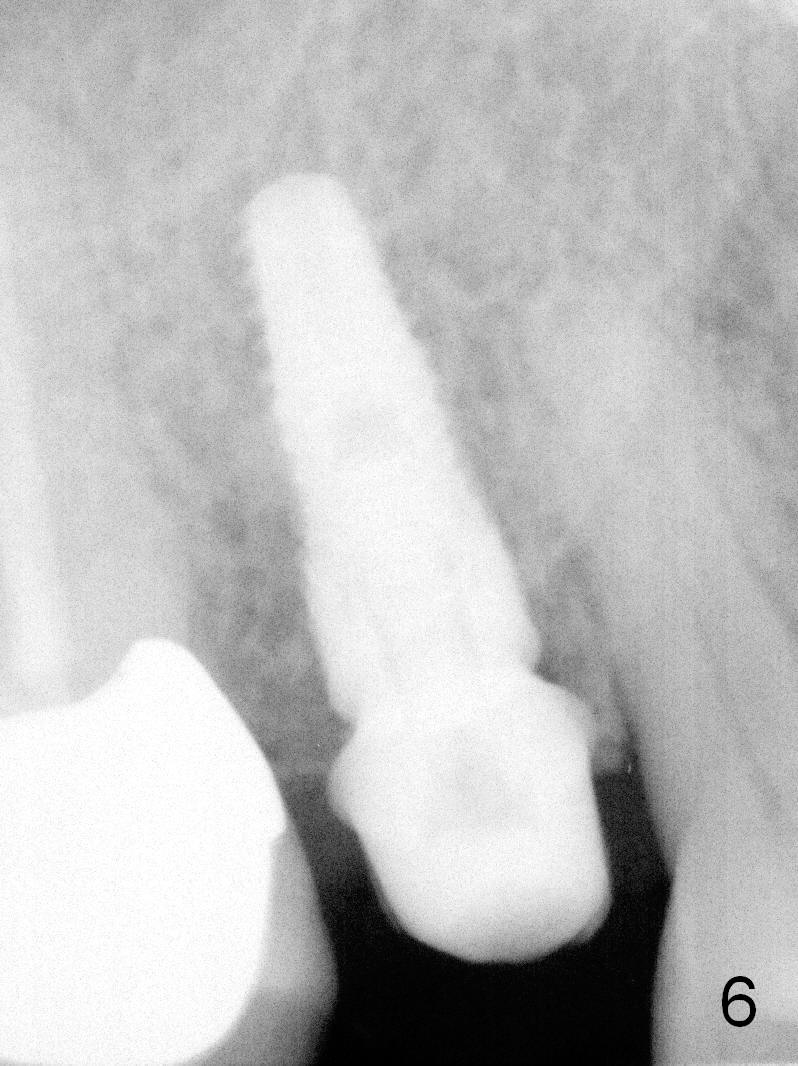
 |
 |
|
 |
 |
|
 |
 |
|
Bone Condensation for Immediate Provisional
A preop photo shows the wide ridge at the site of #4 (Fig.1). A 3 mm tissue punch is used for access. A 1.5 mm pilot drill starts osteotomy, which confirms low bone density. The first bone expander (2.6 mm) is inserted without too much difficulty (Fig.2 E). Resistance of inserting the next 2 expanders (3.0 and 3.4 mm) increases gradually. Insertion torque for a 4.5x12 mm bone-level implant is > 60 Ncm (Fig.3,4 I). The primary stability due to bone condensation allows immediate placement of a 5.8x4 (2) mm abutment (Fig.5 A); after height adjustment and margin exposure with Diode laser (^), an immediate provisional is ready to be fabricated.
The patient returns for follow up 15 days postop. The immediate provisional is loose. After retightening the abutment by hand, the provisional is recemented.
The patient returns for final impression 6 months postop (Fig.6). She is concerned about the palatal position of the temporary crown. When the permanent crown is cemented, it looks too short.
Return to Professionals,
Upper Bicuspid Immediate Implant,
Posterior Immediate Provisional
Xin Wei, DDS, PhD, MS 1st edition 06/05/2015, last revision 01/28/2016